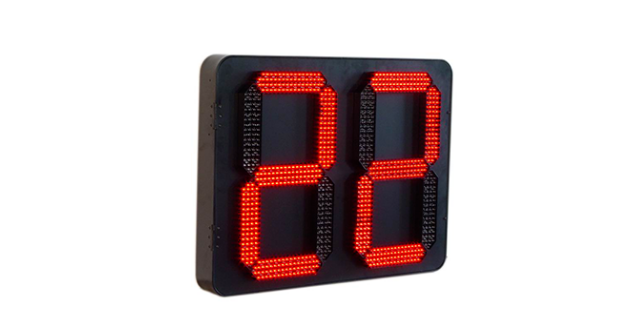Le rôle du compte à rebours modulaire à LED dans la circulation
Gestion du trafic is a critical aspect of urban planning and infrastructure development, and it plays a significant role in ensuring the safety and efficiency of road networks. One innovative tool that has emerged to enhance traffic management is the Compte à rebours modulaire à LED. These timers provide valuable information to both drivers and pedestrians, contributing to safer and more organized traffic flow. In this article, we will explore the role of LED Modular Countdown Timers in traffic management, their benefits, and potential future developments.
1. Améliorer la sécurité des piétons
One of the primary purposes of LED Modular Countdown Timers is to improve pedestrian safety. These timers are typically installed at pedestrian crossings, crosswalks, and intersections. They display a countdown in seconds, indicating how much time pedestrians have to safely cross the road before the traffic signal changes.Pedestrians can use this information to make informed decisions about when to start crossing or whether they have enough time to safely complete their crossing. This reduces the risk of pedestrians attempting to rush across the road when the signal changes, which can lead to accidents and injuries. The countdown timer promotes responsible behavior among pedestrians and helps minimize jaywalking.
2. Réduire la confusion aux intersections
LED Modular Countdown Timers are also effective in reducing intersection confusion. In complex intersections with multiple turning lanes and Signalisation, it can be challenging for drivers to anticipate when it's their turn to proceed. The countdown timers provide clear information about the time remaining before the signal changes, making it easier for drivers to prepare to move or stop.This increased clarity and predictability help reduce the incidence of drivers running red lights or getting stuck in the middle of intersections when the light changes. This, in turn, lowers the risk of accidents and traffic congestion.
3. Minimiser la rage au volant et le stress au volant
LED Modular Countdown Timers contribute to a reduction in road rage and driver stress. In heavy traffic, drivers often experience frustration when they perceive that they have been waiting for an extended period at a red light. The countdown timer gives them a tangible sense of the time remaining, making the waiting period feel more manageable.This improved understanding of the signal cycle reduces impatience and aggressive driving behavior, ultimately making the roads safer for all users. In the long run, this can lead to a more pleasant driving experience and improved mental well-being for commuters.
4. Encourager le respect des feux de circulation
The visibility of countdown timers encourages greater compliance with traffic signals. When drivers and pedestrians are aware of the time remaining, they are more likely to follow the rules of the road. Pedestrians are more inclined to wait for the green light, and drivers are less likely to attempt to beat a changing signal.The knowledge that the countdown timer accurately reflects the signal's status builds trust in the traffic control system, further promoting compliance. This trust can lead to safer and more efficient traffic operations.
5. Améliorer la fluidité de la circulation
LED Modular Countdown Timers can have a positive impact on overall traffic flow. By reducing the incidence of last-minute acceleration or braking at intersections, traffic moves more smoothly. This not only reduces the potential for accidents but also helps to prevent traffic congestion.The Amélioration de la fluidité du trafic can lead to shorter commute times and reduced fuel consumption, benefiting both the environment and the economy. Moreover, this can help optimize public transportation schedules, leading to a more efficient and punctual transit system.
6. Amélioration de l’accessibilité
Countdown timers are invaluable for individuals with disabilities, particularly those with visual or hearing impairments. These timers provide a visual representation of the time remaining, enabling people with limited hearing or vision to navigate intersections and crosswalks safely.The inclusivity of countdown timers aligns with the principles of universal design, which aim to make public spaces accessible to all individuals, regardless of their abilities. This promotes a more equitable and inclusive society.
7. Potentiel d’intégration avec les systèmes de circulation intelligents
The role of LED Modular Countdown Timers in traffic management is likely to expand as they become integrated with Systèmes de circulation intelligents. These systems use data and technology to optimize traffic flow in real time. Countdown timers can play a vital role in this context by providing real-time data on pedestrian and vehicle movements.By collecting and analyzing data from countdown timers, smart traffic systems can adjust signal timings, detect congestion, and respond to changing traffic patterns. This results in even more efficient traffic management and better allocation of resources.
Conclusion
The role of LED Modular Countdown Timers in traffic management cannot be overstated. These timers significantly enhance pedestrian safety, reduce intersection confusion, minimize road rage, and encourage compliance with traffic signals. They also improve traffic flow, enhance accessibility, and have the potential to be integrated with smart traffic systems, further optimizing urban transportation.As cities continue to grow and face increasing traffic challenges, LED Modular Countdown Timers represent a valuable tool in the arsenal of traffic management strategies. They promote safer and more efficient transportation systems, contributing to the well-being of both urban residents and the environment.








Laisser un commentaire